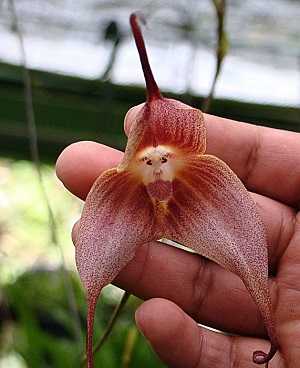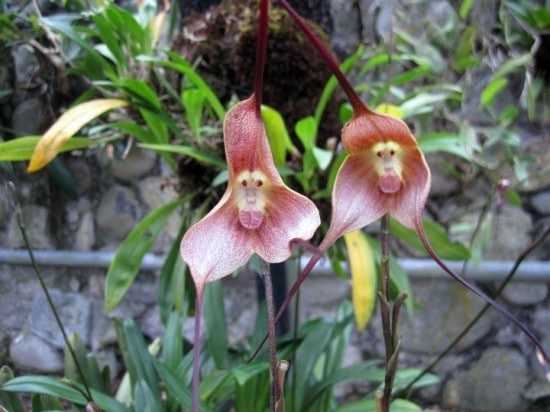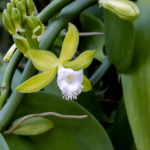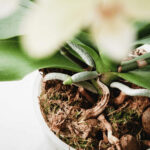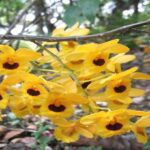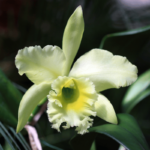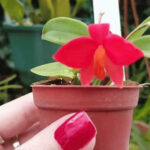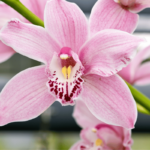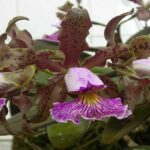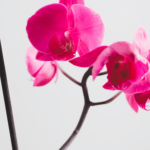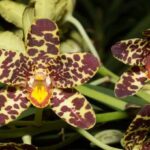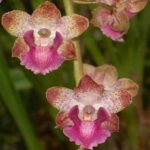You familiar with the monkey face orchid? Did you know it’s a rare and intriguing orchid?
Also known as dracula simia, this orchid has gained attention due to the resemblance of its flowers to the face of a golden lion tamarin monkey.
They belong to the genus dracula, which currently comprises 131 species. Previously, they were classified as masdevallia, another genus with over 600 species.
These orchids are native to South America and can be found in the following countries:
- Colombia
- Mexico
- Ecuador
- Peru
They grow at altitudes ranging from 1000 to 2000 meters (3280,5 to 6561 feet) above sea level, always epiphytic in nature.
Read on to learn all about the monkey face orchid, its curiosities, characteristics, and most importantly, how to cultivate them.
Curiosities
The monkey face orchid was discovered in 1978 and received its scientific name dracula simia the same year.
There are a few theories about why the name dracula was chosen for this species, but the main one is:
The name dracula was given because of the red color some species exhibit and the shape of their labellum.
This orchid is considered expensive.
This is because they are complicated to cultivate.
And if you want to learn how to cultivate this orchid, keep this in mind:
- They don’t have pseudobulbs.
- Pseudobulbs are responsible for storing water and nutrients.
- Therefore, they need high humidity and good fertilization.
Flowers
Now, let’s talk about the most interesting part of these orchids – their flowers.
But did you know that besides resembling a monkey, this orchid also has various other interesting characteristics in its flowers?
Below are the 8 most interesting characteristics of the monkey face orchid’s flowers:
- Has a fragrance resembling ripe oranges
- Its name was derived from the spurs on its sepals
- Can bloom at any time
- Its flower can reach up to 15 centimeters (5.9 inch) in length
- Comes in various colors like yellow, dark red, brown, and even white (dracula simia alba)
- They produce one flower per stem
- Usually, their flowers last 10 days
- Looks like a golden lion tamarin monkey
How many of these characteristics were you familiar with? Leave your comments below.
How to Care for the Monkey Face Orchid
This orchid is considered to be of medium to difficult cultivation.
So, if you’re a beginner in the world of orchids, I recommend starting with another species.
For example, Phalaenopsis, Paphiopedilum, Dendrobium, Vanda, Cymbidium, or even Cattleyas.
But if you really want to cultivate this plant, the following tips might help you.
Watering
As mentioned earlier, they don’t have pseudobulbs, so they need to be kept consistently moist, but don’t overdo it.
Here are some guidelines to follow when watering your dracula simia:
- Never let the soil dry out.
- Watering should be done between 5 to 7 times a week, but this can vary.
To check if your plant’s potting mix is dry or not, follow this tip:
- Insert your finger into the potting mix.
- If it’s very wet, wait a bit.
- If you feel it’s slightly moist, you can water it.
Lighting and Temperature
The monkey face orchid prefers medium light.
Therefore, make sure it receives indirect light during the times when the sun is not too strong, meaning:
- Morning: from sunrise until 9:00 or 8:00 AM
- Afternoon: from 5:00 PM until sunset
Orchids generally provide us with some clues when we are providing incorrect lighting:
- More yellowish leaves: excessive sunlight
- Darker green leaves: lack of sunlight
As for temperature, the dracula simia doesn’t like very hot climates.
It prefers cooler temperatures, not exceeding 25°C (77°F). Ideally, between 11°C to 25°C (52°F to 77°F) is suitable.
If you live in colder regions like the Southern states, your cultivation might be much simpler.
Humidity and Ventilation
For almost all orchids, ventilation should be similar.
You should ensure your plant is in a place with good air circulation, but the air shouldn’t be too strong.
As for humidity, since they live in high-altitude forests, the monkey face orchid likes high humidity.
Normally, the recommended humidity level is between 70% and 80%.
To ensure this humidity, you can use various methods to increase it.
You can use containers with gravel, air humidifiers, among other things.
Potting Mix and Fertilization
As this is a plant that can’t store water, the potting mix can do that for it.
Therefore, when choosing a soil for your monkey face orchid, make sure it has excellent water retention.
As for fertilizer, you can use organic and chemical mixtures.
If you choose to use natural fertilizers, you can use bokashi or castor cake (other fertilizers might work too).
Now, for chemical fertilizers, follow the tips below:
- NPK 20-20-20 throughout the year except during flowering
- NPK 15-15-30 during flowering
- In both cases, fertilize once a week.
But always be careful not to over-fertilize this plant.
Where to Plant and Multiplication
The dracula simia is a plant that needs pots with large holes during its flowering.
This way, if your pot doesn’t have large holes at the bottom and on the sides, this plant might have difficulties developing.
So, when choosing a place to cultivate them, choose from the options below:
- Cache pots (Orchid Wood Basket)
- Trees
- Baskets
If possible, avoid using closed clay or plastic pots.
As for its multiplication, these orchids divide through clump division.
If you have managed to cultivate them and now want to divide them, whether for selling, cultivating, or gifting a new plant, watch the video below:
Conclusion
That was the complete guide on dracula simia orchids.
Now you know the main characteristics of this orchid, and most importantly, how to cultivate them if you want to buy one.
If you liked this curious orchid, also check out the article on the rarest orchids in the world because there you’ll find more interesting orchids.
And help us reach more people; share this article on your social media.




